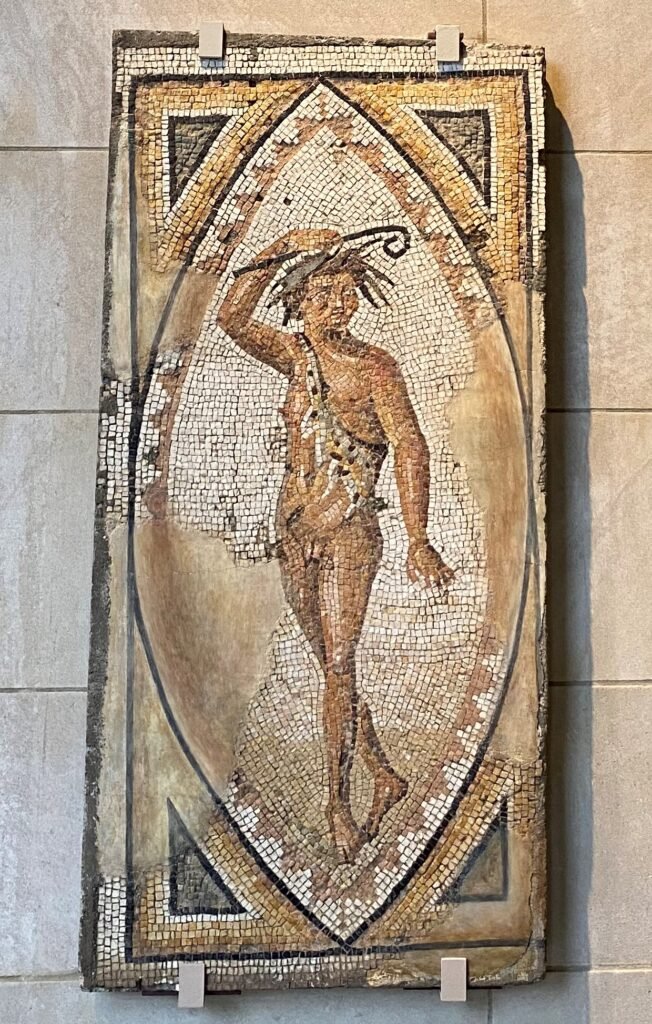Conservation of Antioch Mosaics
After looking at the mosaics presented at the Baltimore Museum of Art, I am interested in pursuing a workstream regarding the conservation of the mosaics. I am interested in understanding the different choices made by conservators as well as the impact it has on the public’s experience with the pieces. It would also be interesting to discuss the intersection between preservation and experience. Limiting the public’s interaction with the mosaics may lengthen their survival, yet it takes away from the intended purpose of the pieces.
The Baltimore Museum of Art currently has a conservator on hand. This provides a unique opportunity to see the mosaics as they are being restored. Currently, from my firsthand observation, I have noticed that there is a mix of many different conservation methods used on the mosaics. Some, such as Europa and the Bull and Peddler of Erotes,have tiles painted on to mimic tesserae.
Portion of mosaic from "Peddler of Erotes" that clearly shows painted on tesserae most visibly on the body of the Eros.
Portion of mosaic from "Europa and the Bull" that shows painted on fragment for conservation. This takes up the bottom half of the image which depicts the bottom half of the bull and the water.
This makes it seem as if the previous conservators were trying to hide or gloss over the fact that there are pieces of the work missing. However, viewers are not distracted by the missing fragments and are able to fully immerse themselves in the image without obstruction. Here also arise questions of how the artist intended for the mosaics to age, which alludes to the next method of conservation I have encountered.
Though not present at the BMA, some of the Antioch mosaics have been displayed in a manner that most resembles their ancient function. At the Worcester Art Museum there is mosaic embedded in the floor with only a small barrier. This allows for viewers to see the mosaic from its intended perspective; however, it limits the viewer’s interaction. There have also been cases where mosaics have been installed in floors where viewers can directly interact with the work by walking over them, such as at Dumbarton Oaks. This creates conflict between those who want to preserve the mosaics as much as possible versus those who believe viewers should be able to experience the works in a way that they would originally be displayed.
Going back to my observations at the BMA, I have also noticed one method distinct from the others. The missing tiles of on the Medallion with Bacchus were painted on, not to look like tesserae, but to look like a continuous image.
"Medallion with Bacchus" mosaic with missing fragments painted in to continue the image without mimicking tesserae.
This is interesting because it clearly highlights the missing fragments due to the visible change in texture and color. However, the image is not obstructed, and the viewer can see the whole image without having to draw conclusions on the missing pieces. However, does this take away from the viewers experience with the mosaic and their understanding of its age, history, and imagery? Moving forward I would like to investigate the choices made by conservators and how it impacts the relationship between the works and the viewers. Having the mosaics on hand at the BMA and a current conservation initiative ongoing provides a great opportunity to understand the thought processes behind these choices. Having a background in science, also, spurs my interest in the chemical side of how different methods may lead to different degradation of the work. This is something that is more complex, which I would like to focus on later in my research.
Patricia Kolodziejski



